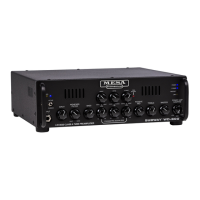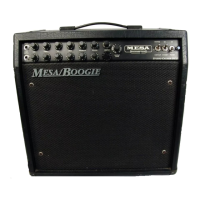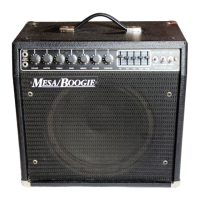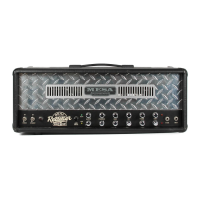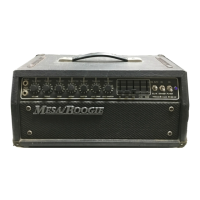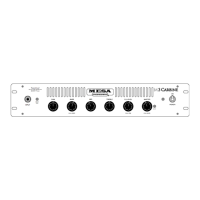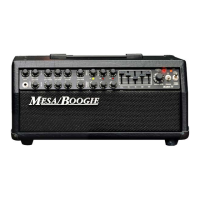DISCUSSION ABOUT SMPS & CLASS D FROM THE DESIGN TEAM:
QUESTION: What makes this new amplifier so light weight?
ANSWER: This amplifier uses new technology, both an SMPS (SwitchMode Power Supply) and a Class D power amplifier, to de-
crease the size and weight. These designs are carefully implemented and fully tested to insure robust, reliable performance in real
world conditions night after night.
QUESTION: How can such a light weight amplifier deliver solid bass? I thought an amp has to be heavy to produce deep bass.
ANSWER: By operating in a non-linear fashion (with power devices that are either fully on or fully off) the output stage no longer
has to accommodate reactive load inefficiencies, overly sensitive protection of “safe operating areas”, and dissipate waste heat from
output devices operating within their linear region. This means more power and better low frequency control with less heat. The pro
audio industry has been using this technology almost exclusively in the large scale touring market for about 20 years, driving massive
arena and stadium subwoofers night after grueling night on the road. In fact, much of the technology in our power amplifiers comes
from the high reliability touring pro audio world.
QUESTION: How do I know that these amplifiers will be reliable?
ANSWER: A five year factory warranty should inspire confidence that every aspect of design and manufacturing reflects the highest
quality in the industry and decades of successful experience producing professional touring grade products. The designer of the Sub-
way amplifier project has over 20 years of SMPS/Class D amplifier experience, in bass amplifiers as well as in touring pro audio. We
have worked closely with the power module’s European engineering team on the development of these new power modules, including
extensive testing, on real world stages with real musicians and real audiences, night after night, as proven by the reputation of the
entire Subway bass amp line. This engineering relationship goes back over 20 years, when class D amplifiers were in their infancy.
QUESTION: Why is the power supply so small and light weight?
ANSWER: An SMPS is just like any other power supply, except for the fact that it operates at a much higher frequency (~100kHz)
than a traditional power supply (either 50Hz or 60Hz). A high operating frequency reduces the size of the transformer’s core, which
in turn reduces the length of the wire wound around the core. Since most of the weight of a power transformer is in the core and the
copper wire, reducing the core reduces size, weight and the amount of copper needed to wrap around the core, which improves the
performance of these smaller transformers under the highest load conditions.
QUESTION: How does the SMPS work?
ANSWER: Without getting too technical, a switch-mode power supply takes the incoming AC mains (50-60Hz) power, rectifies it to a
high voltage direct current (HVDC). This HVDC is then filtered/stored in the input filter capacitors as reserve energy for discharge as
needed into dynamic loads. This HVDC is then chopped/switched at about 100kHz into high voltage, high frequency alternating current
(HVHFAC), which is fed through a high frequency transformer which converts the HVHFAC into low voltage, high frequency alternating
current (LVHFAC) which is then rectified and filtered into low voltage direct current (LVDC) that the power amplifier’s circuitry uses.
QUESTION: Why is the Class D power amplifier so small and light weight?
ANSWER: A Class D amplifier operates its output stage non-linearly, meaning that the output devices are switched either fully on or
fully off at a switching frequency of about 500kHz. This “cutoff-saturation” switching minimizes waste heat by avoiding operation in the
wasteful “linear range”, and without the heat, there’s no need for the large, heavy aluminum heatsinks.
QUESTION: How does the Class D amplifier work?
ANSWER: In Class D amplifiers, the analog audio signal is converted into a PWM (pulse width modulated) pulse train representa-
tion of the analog audio signal (similar to the A/D converter in a PWM digital audio recorder) at +5 volts conventional logic level. This
PWM signal is level shifted upwards by large switching power MOSFET transistors (that operate non-linearly to avoid waste heat) to
high voltage and current. The resulting high level PWM signal then passes through a high power “low pass reconstruction filter” that
extracts the original but level shifted (amplified) audio signal from the PWM signal which feeds your speakers. Class D is not “digital”,
it is a non-linear analog technology, sharing some fleeting similarities with its digital counterpart. (Disclaimer: This is a simplified
PAGE 13
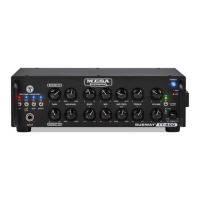
